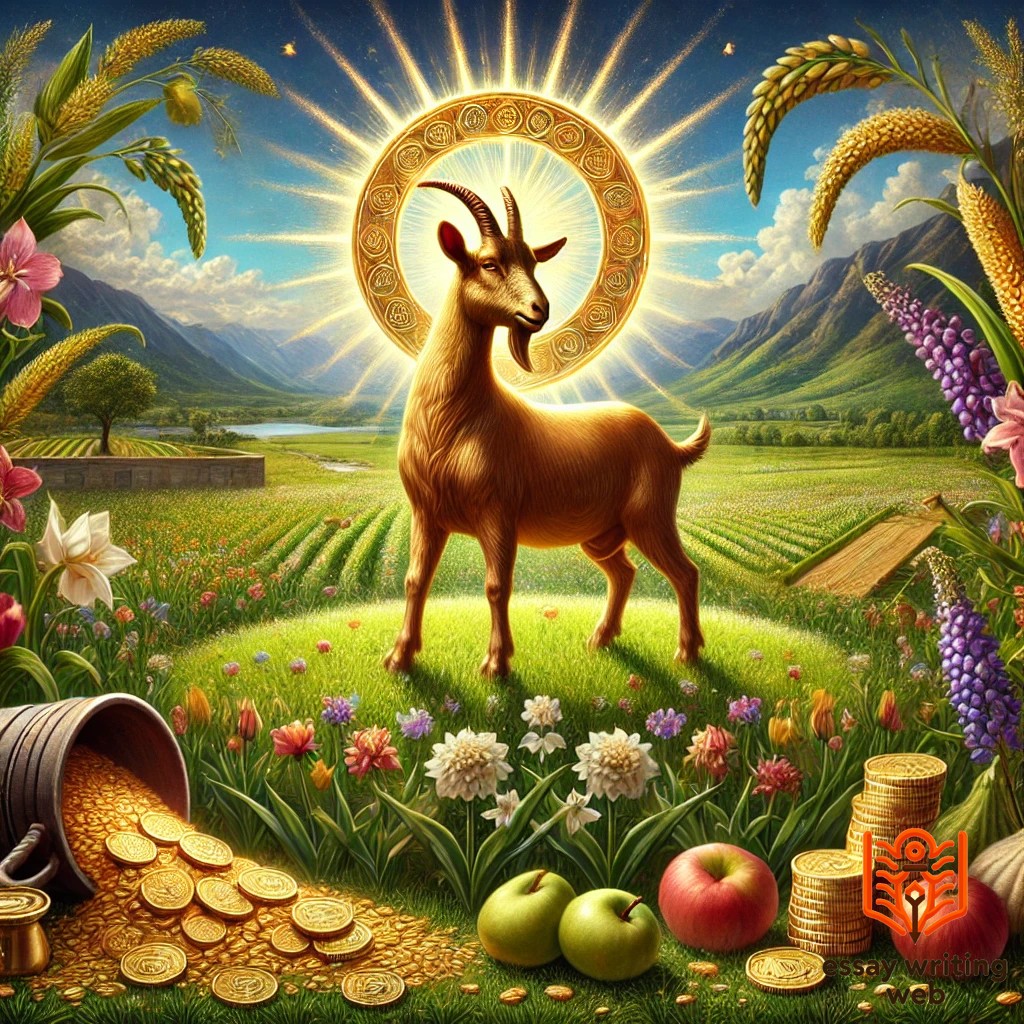 Essay Writing Web
Essay Writing Web
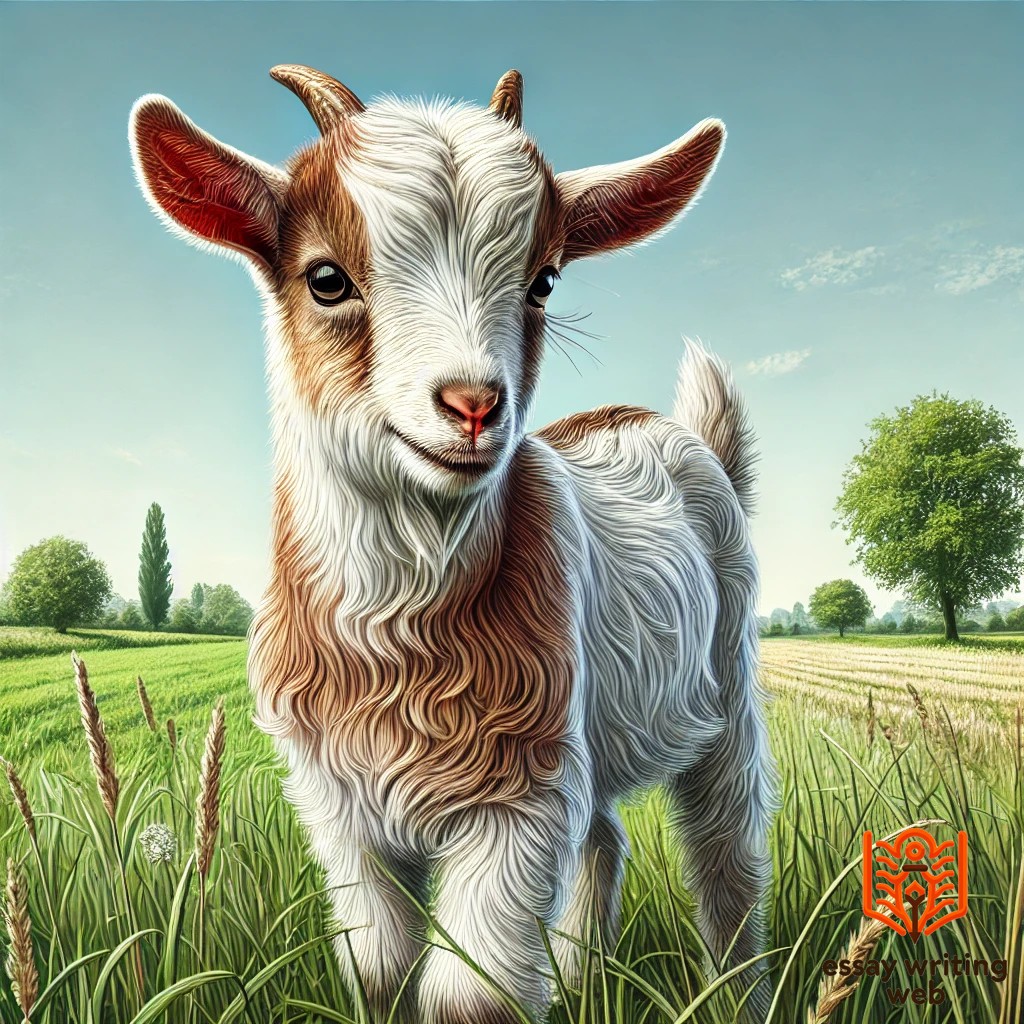
 18-09-2024
18-09-2024
 www.essaywritingweb.com
www.essaywritingweb.com
Goats, one of the earliest domesticated animals, hold significant importance in human history and agriculture. They belong to the Bovidae family and are known for their resilience, adaptability, and usefulness. Goats have been domesticated for thousands of years, providing humans with essential resources such as milk, meat, wool, and leather. They are often regarded as hardy animals, capable of thriving in diverse environments, ranging from rugged mountains to arid deserts. This adaptability makes them a valuable asset to farmers across the globe.
There are numerous breeds of goats, each adapted to specific climates and purposes. For example, the Boer goat is known for its meat production, while the Saanen and Alpine breeds are prized for their high-quality milk yield. Beyond their agricultural uses, goats are also kept as pets by some due to their friendly nature and intelligence. Known for their curiosity, goats are social creatures that enjoy interacting with both humans and other animals. They are also known for their remarkable climbing abilities, often spotted balancing on steep terrains or even climbing trees.
Goats play a vital role in sustainable agriculture, not only providing food and clothing but also contributing to environmental maintenance. Their grazing habits help in controlling weeds and preventing the spread of invasive plant species, which can benefit both agricultural and natural ecosystems. In addition, goats are efficient converters of low-quality forage into high-quality protein, making them an essential component of food security in many developing regions.
Overall, goats are versatile and indispensable animals in both rural and urban settings. Their adaptability, resourcefulness, and economic value make them a crucial part of agricultural systems worldwide. As the demand for sustainable farming practices increases, goats are becoming even more important in maintaining ecological balance and providing essential resources to communities.
Goats are one of the most diverse domesticated animals, with numerous breeds that have been developed over time to suit various agricultural needs and climates. These breeds differ in terms of size, physical characteristics, and productivity, with each offering unique benefits in terms of milk, meat, fiber, or even companionship. Some of the most common types of goats include dairy goats, meat goats, fiber goats, and pet or dwarf goats, each with distinct breeds that serve specific purposes.
Dairy goats are known for their ability to produce high-quality milk, which is used in making a wide range of dairy products, including cheese, yogurt, and butter. Popular dairy breeds include the Saanen, known for its large size and exceptional milk yield, and the Alpine, which produces rich milk with a higher butterfat content. Another notable dairy breed is the Nubian, recognized for its long, droopy ears and creamy, high-fat milk.
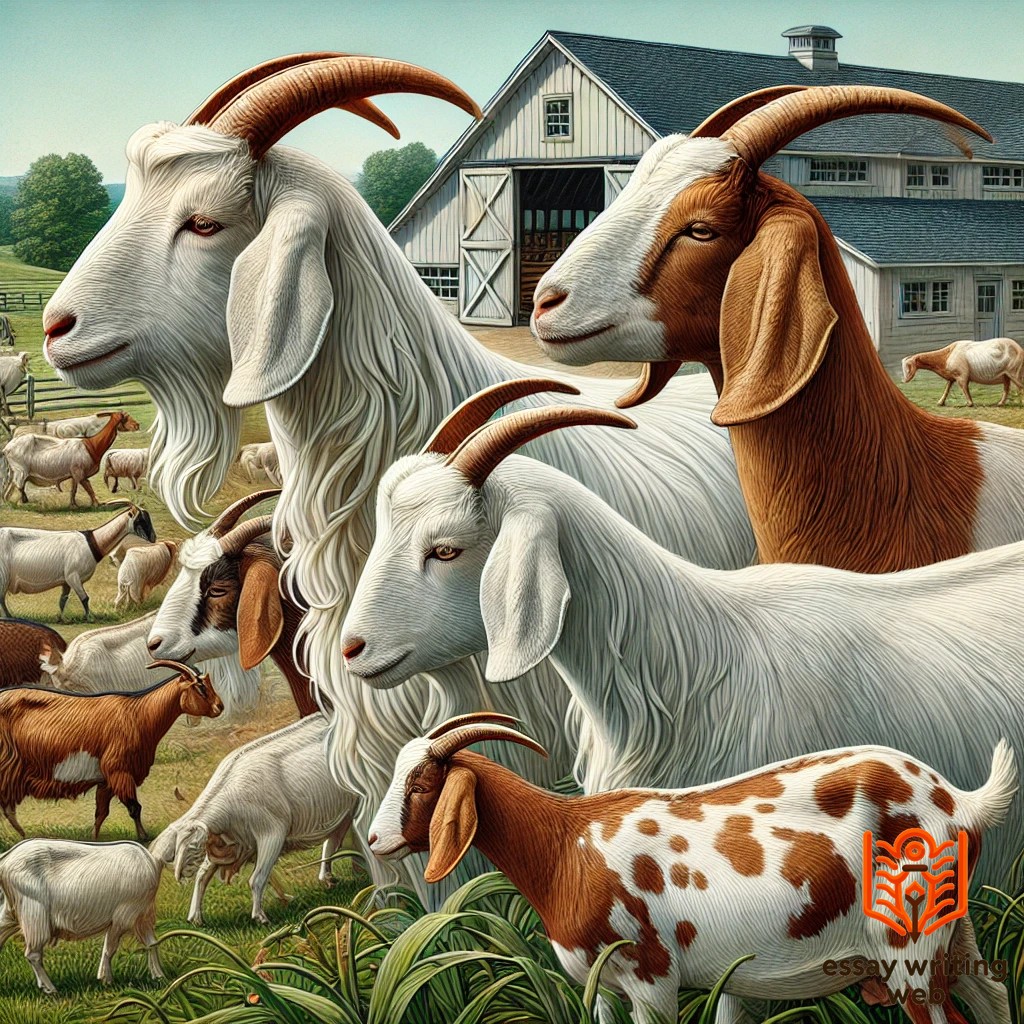
Meat goats are primarily raised for their lean, nutritious meat, which is popular in many cultures worldwide. The Boer goat, originally from South Africa, is the most well-known meat breed due to its rapid growth rate, muscular build, and high-quality meat. The Kiko goat, a hardy breed from New Zealand, is also valued for its ability to thrive in challenging environments while still producing excellent meat.

Certain goats are prized for their fiber, which is used to make luxurious textiles. The Angora goat is renowned for producing mohair, a silky fiber used in high-quality fabrics. Similarly, the Cashmere goat produces the soft, fine undercoat known as cashmere, one of the most sought-after fibers in the fashion industry.
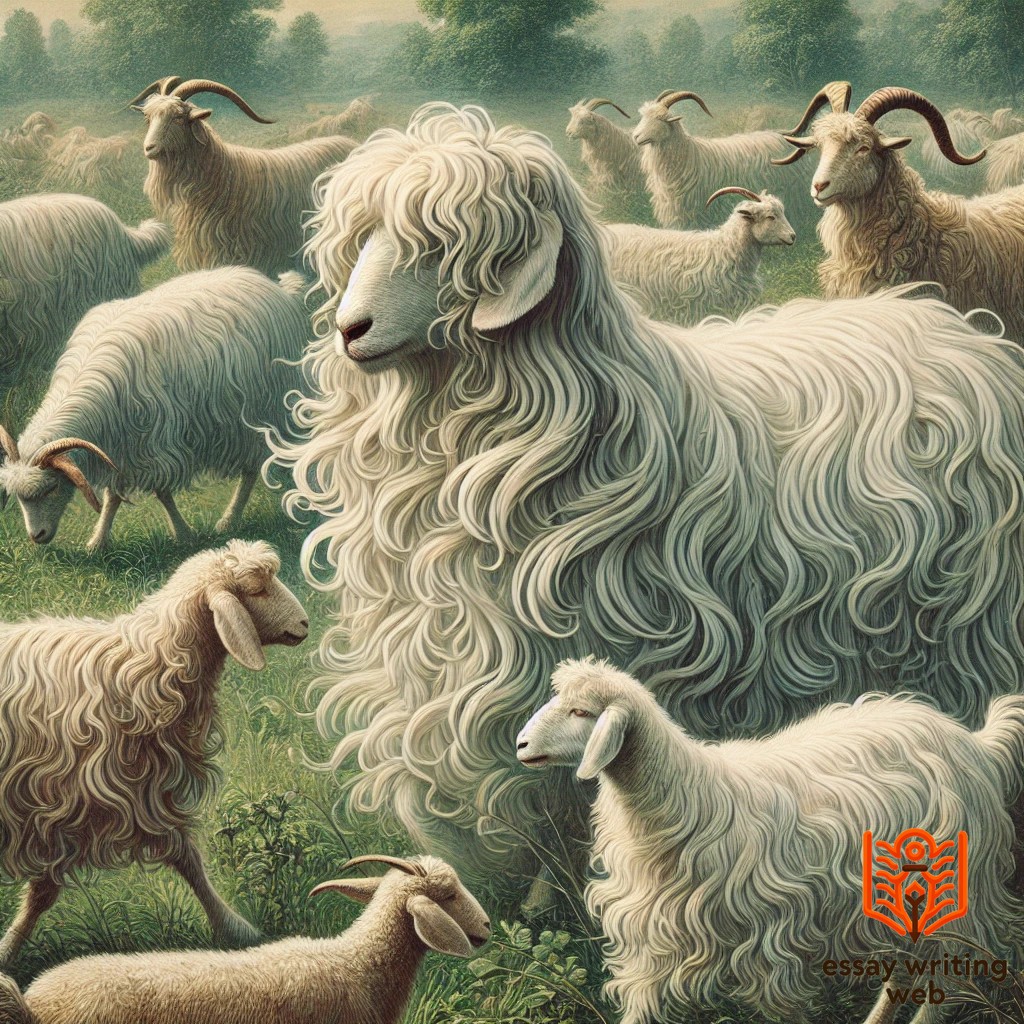
For those seeking smaller, more manageable goats, breeds like the Pygmy goat and Nigerian Dwarf are popular choices. These goats are often kept as pets due to their friendly nature and compact size, although Nigerian Dwarfs also produce milk despite their small stature.
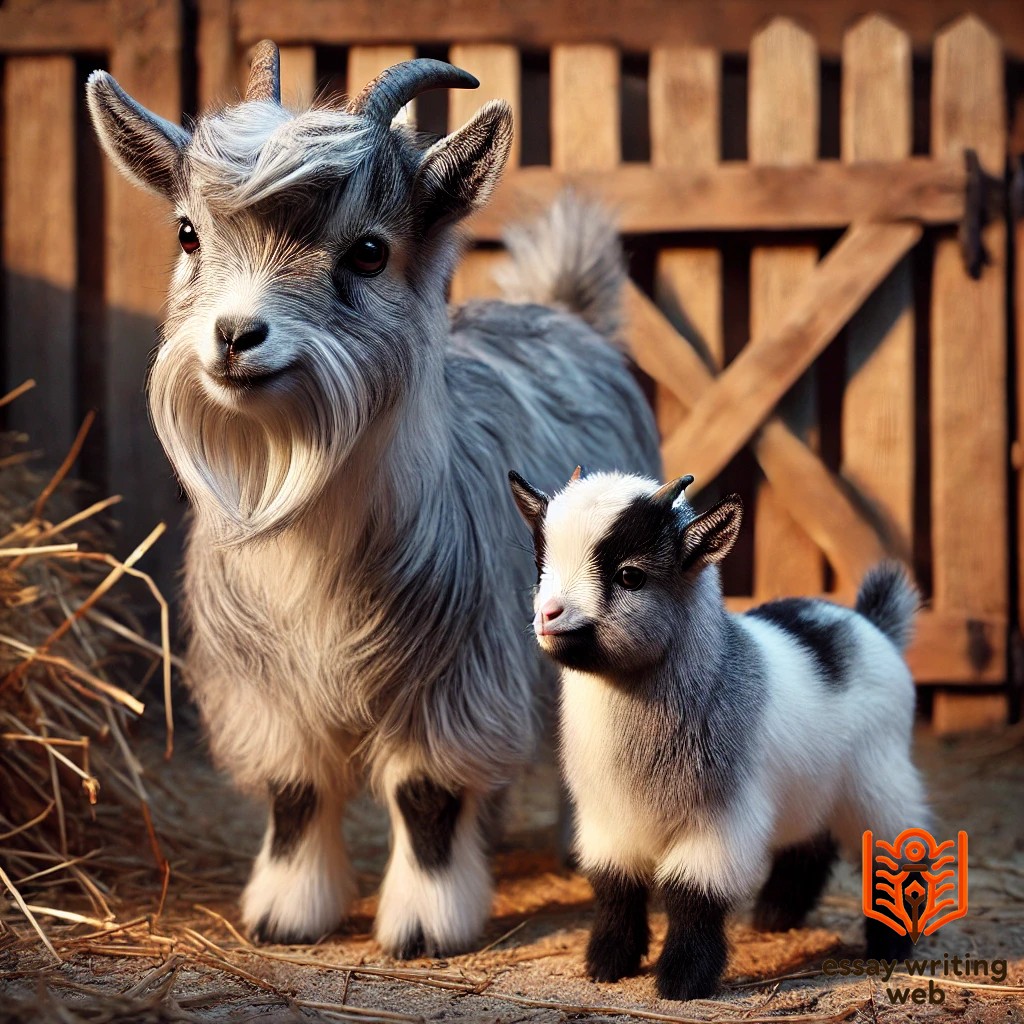
Each breed of goat offers unique benefits, making them versatile animals suitable for various agricultural and personal purposes. Their adaptability and utility make goats an essential part of farming systems around the world.
Goats are highly adaptable animals, thriving in a wide range of habitats across the world. From mountainous terrains to arid deserts, they can adjust to different environments due to their remarkable survival instincts. In the wild, goats often inhabit rocky and rugged landscapes, using their impressive climbing skills to navigate steep slopes and cliffs. This ability to balance on uneven surfaces helps them avoid predators and access food sources that are difficult to reach. Domesticated goats, on the other hand, are commonly found on farms and ranches, where they are raised for milk, meat, and fiber. They are also used for land management, as their grazing helps control overgrown vegetation.
Goats are natural foragers and have a varied diet that consists mostly of plants. They are known as browsers, meaning they prefer to eat leaves, shrubs, and weeds rather than just grass. This dietary preference sets them apart from other livestock, like sheep and cows, which are primarily grazers. Goats are highly efficient in selecting nutrient-rich plants, and their flexible diet includes twigs, vines, bark, and even tough plants that other animals tend to avoid. Their ability to consume a wide variety of vegetation makes them valuable in managing overgrown landscapes and preventing the spread of invasive plants.
In captivity, goats are fed hay, grains, and supplements to ensure they receive balanced nutrition, especially when grazing opportunities are limited. Their adaptability to various habitats and diets makes them one of the most versatile domesticated animals globally.
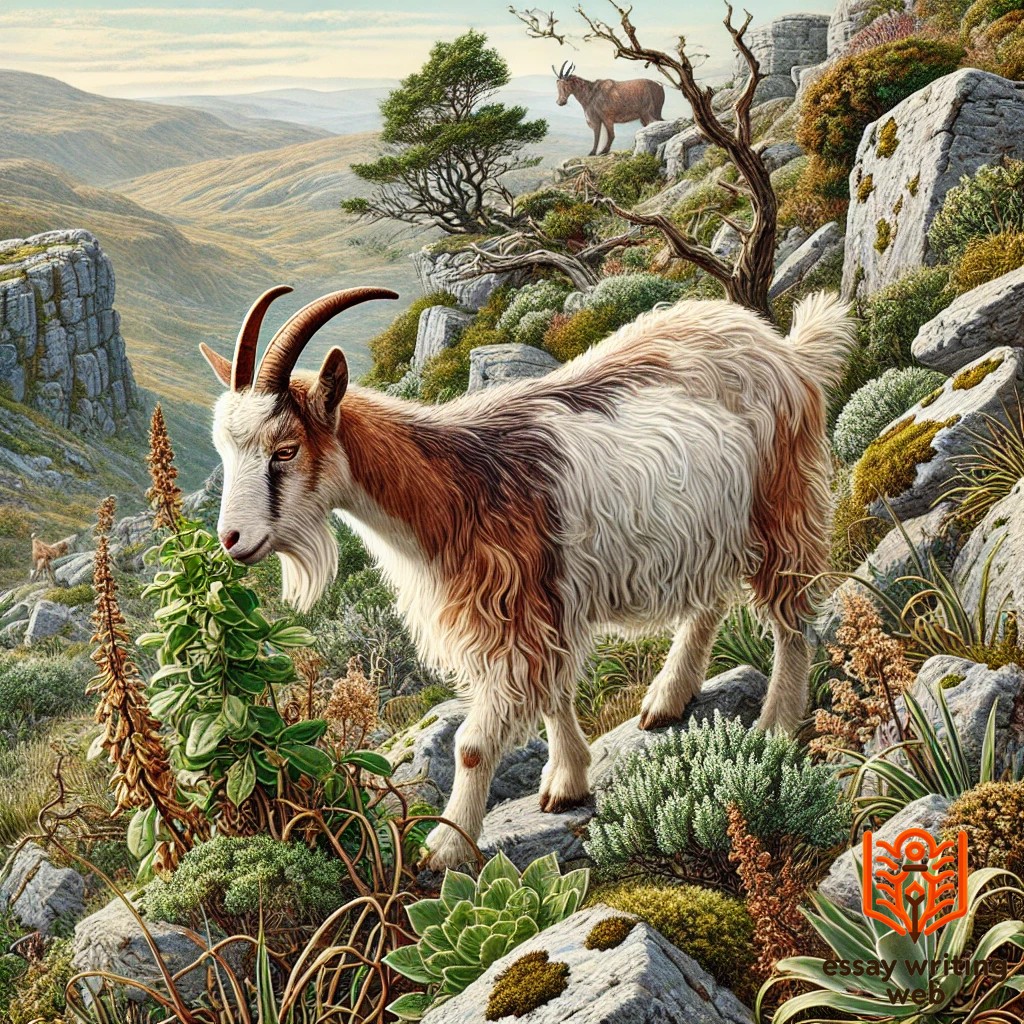
Goats are social, intelligent animals known for their curiosity and playful behavior. In their natural environment, goats live in groups, or herds, with a well-defined social structure. The hierarchy within a herd is established through various social interactions, often based on age, size, and strength. Dominant goats typically lead the herd, guiding them in finding food and shelter, while lower-ranking goats follow. This social structure provides order within the herd, allowing them to move together cohesively and efficiently.
Goats are highly interactive and communicate with each other through vocalizations, body language, and even scent. They use bleating sounds to express different emotions, ranging from excitement to distress. Mothers and kids (young goats) develop a strong bond, with each recognizing the other's voice within the herd. Goats also engage in playful activities such as head-butting, jumping, and climbing, which not only helps them establish social bonds but also serves as a form of exercise and mental stimulation.
In terms of behavior, goats are curious explorers. Their natural tendency to investigate their surroundings often leads them to climb, chew, and test the strength of various objects. This makes them excellent problem solvers, able to escape enclosures or find hidden food sources. Despite their adventurous nature, goats are herd animals and become stressed when isolated. They rely on the companionship of other goats or animals to feel secure.
Overall, goats' social behavior and interactions within a herd demonstrate their intelligence, adaptability, and strong need for social connections.
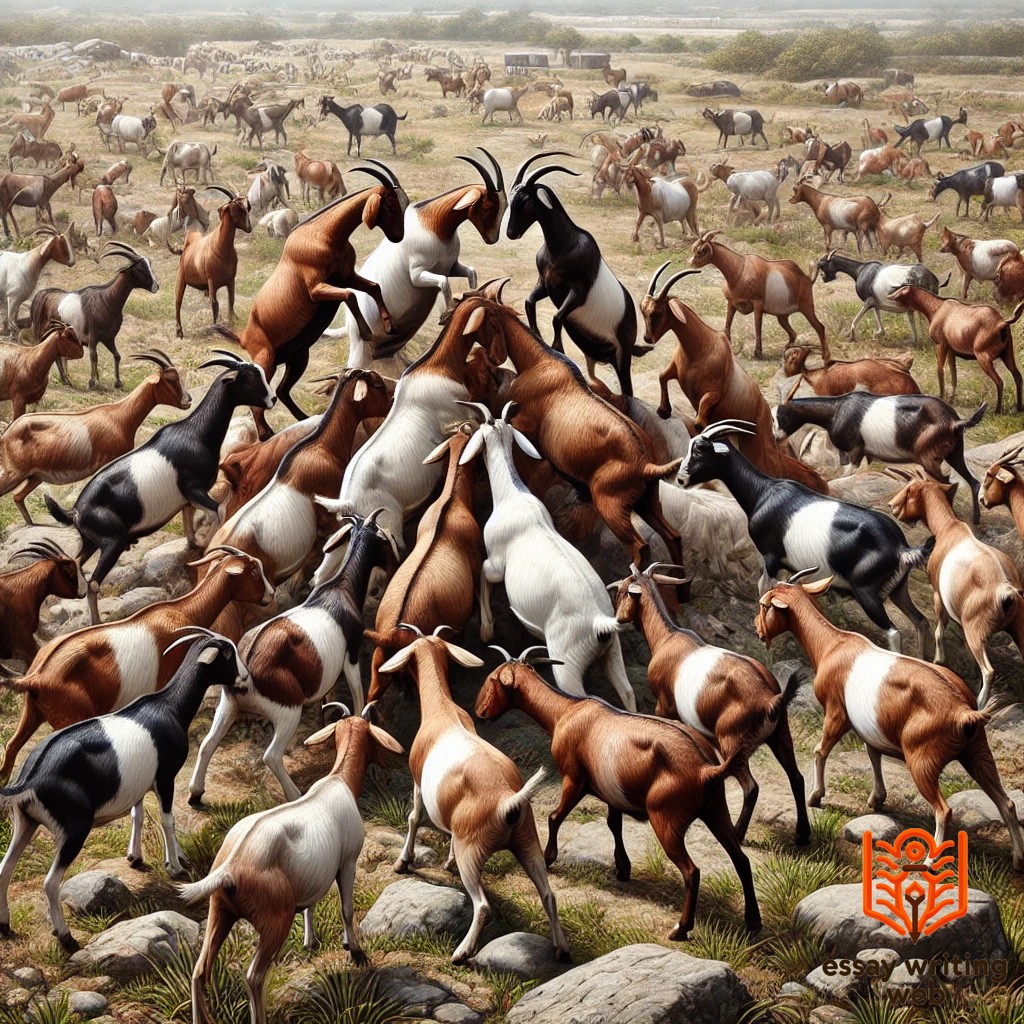
Goats have been an integral part of human civilization for thousands of years, providing a wide range of resources that are essential for agriculture and daily life. One of the primary uses of goats is in dairy production. Goat milk is highly nutritious, rich in vitamins and minerals, and easier to digest than cow’s milk, making it a popular choice for people with lactose intolerance. Goat cheese and yogurt are also widely consumed, offering an alternative to traditional dairy products.
In addition to milk, goats are valued for their meat, which is a significant source of protein in many parts of the world, especially in regions like Africa, the Middle East, and South Asia. Goat meat, known as chevon or mutton, is lean and flavorful, and it plays a crucial role in the diets of many cultures. Furthermore, goats are used for their fiber, with breeds like the Angora goat producing mohair and the Cashmere goat producing luxurious cashmere wool, both of which are highly prized in the textile industry.
Goats also play an important role in sustainable agriculture. They are excellent foragers and can thrive in areas with poor-quality vegetation, helping to control weeds and reduce the spread of invasive plant species. This ability makes goats valuable in managing land and preventing wildfires. Additionally, goats are increasingly being used in eco-friendly landscaping, often referred to as "goatscaping," where they graze on overgrown vegetation to clear land naturally.
Overall, goats provide essential resources and contribute significantly to sustainable agricultural practices worldwide.
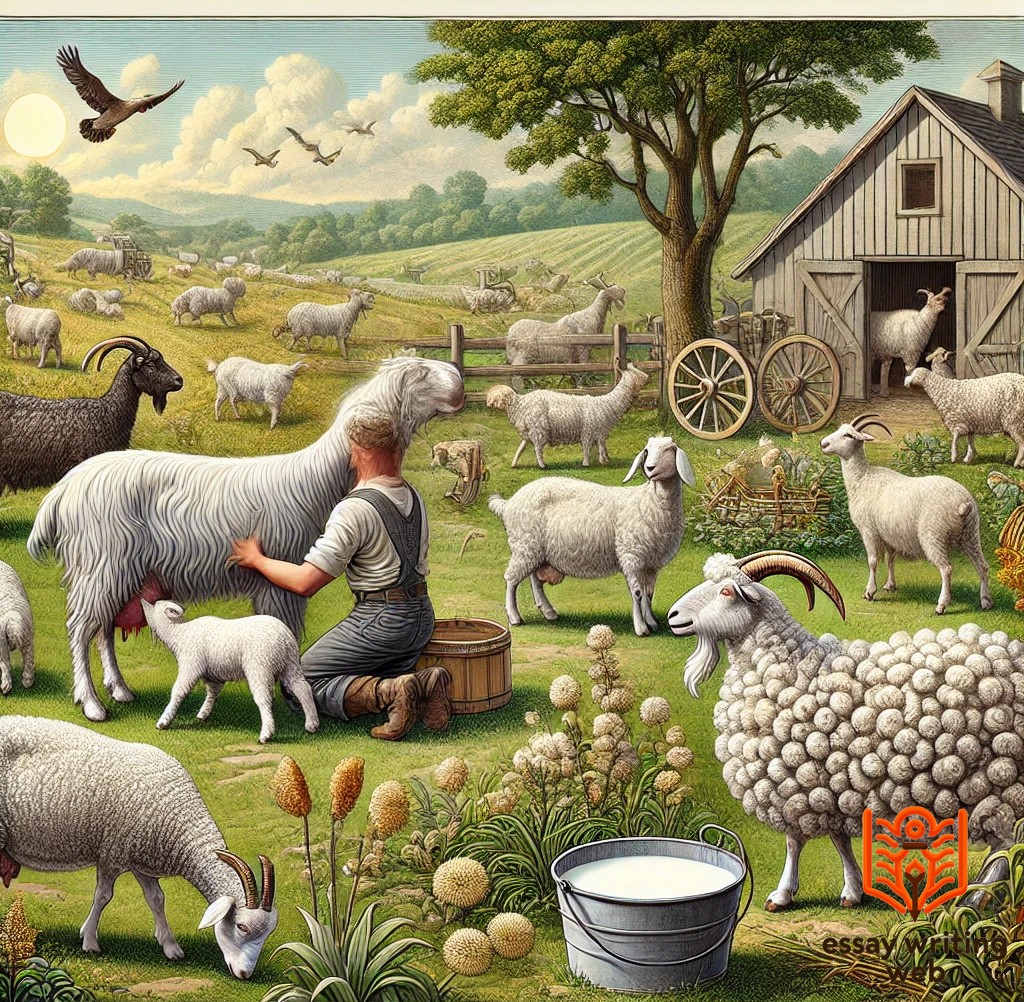
The health and care of goats are critical to ensuring their well-being and productivity, whether they are raised for milk, meat, fiber, or as pets. Proper nutrition, housing, and disease prevention are essential components of goat care.
Goats are natural foragers, and their diet should include a variety of grasses, shrubs, and legumes. Providing high-quality hay and grain supplements ensures they receive the necessary nutrients. Access to clean water and mineral supplements, especially for calcium and phosphorus, is vital for maintaining their health, particularly for dairy goats that need extra nutrition for milk production.
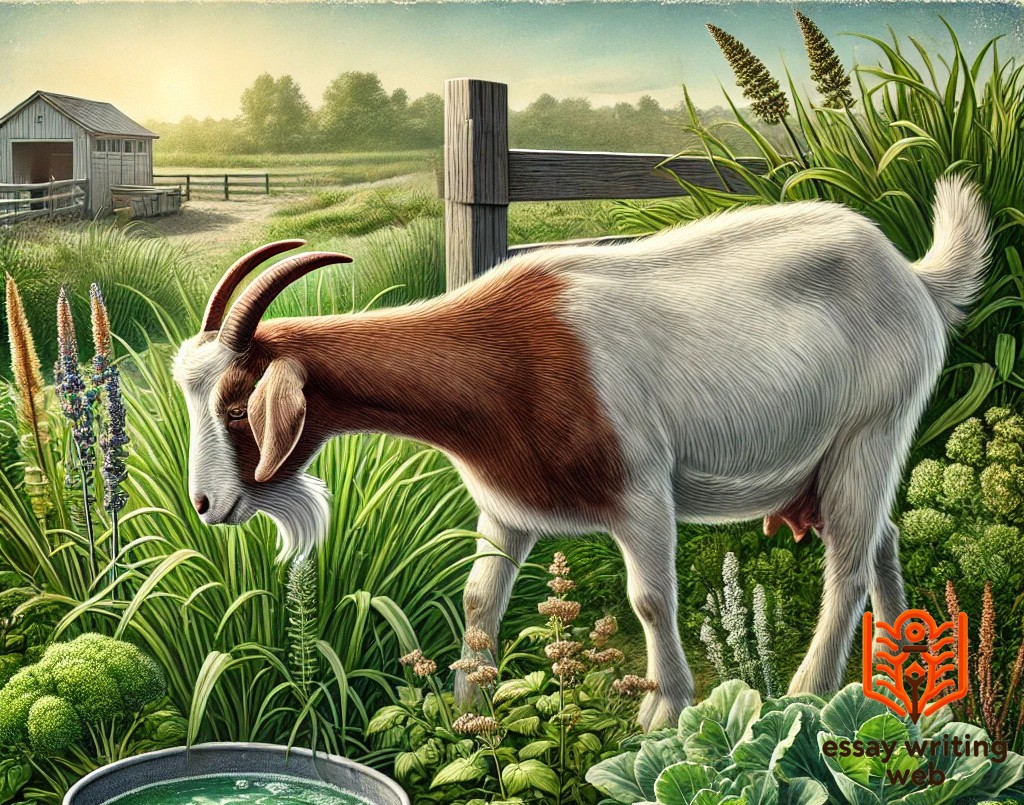
Goats need clean, dry, and well-ventilated shelters to protect them from harsh weather conditions. Proper fencing is also crucial, as goats are known for their curious nature and ability to escape enclosures. The shelter should have enough space for the goats to move freely and avoid overcrowding, which can lead to stress and disease.
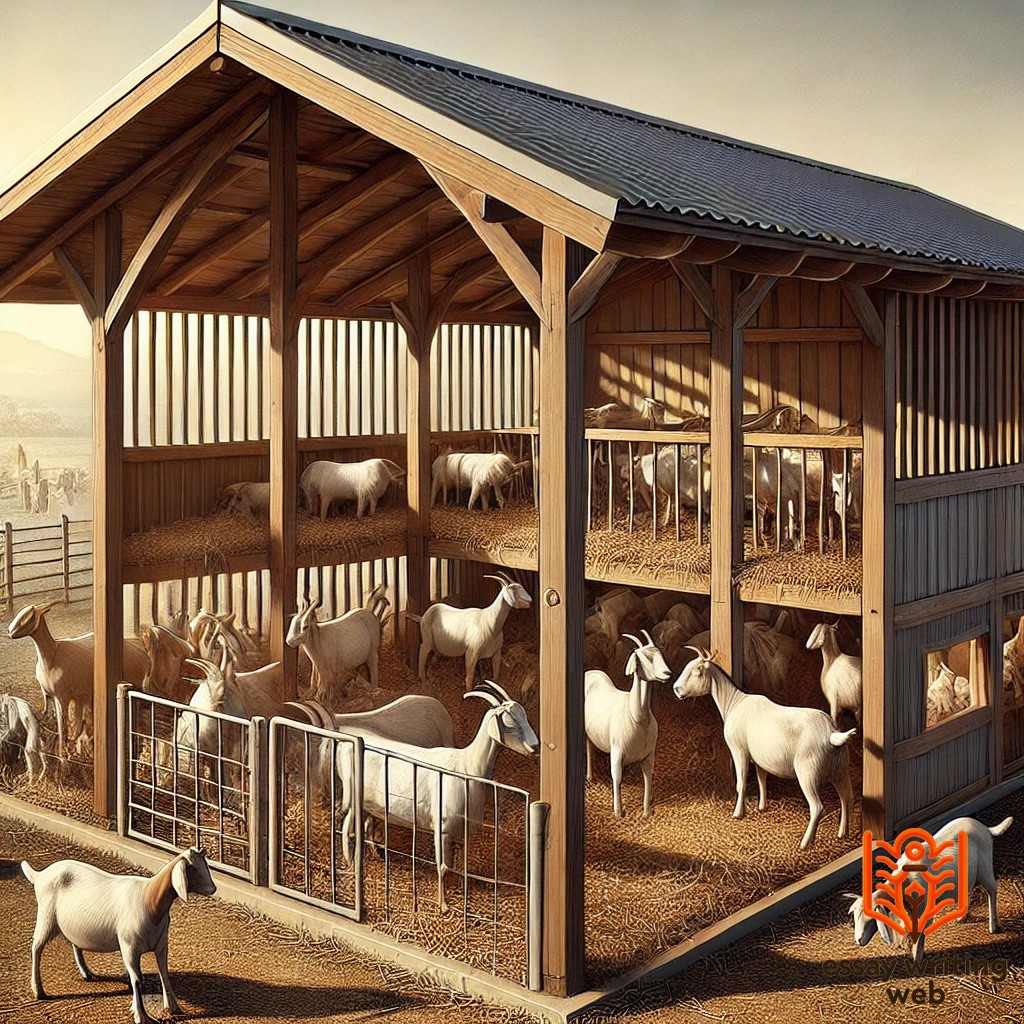
Routine veterinary care, including vaccinations and deworming, is essential to prevent common goat diseases like foot rot, pneumonia, and internal parasites. Goats should be checked regularly for signs of illness, such as lethargy, loss of appetite, or abnormal behavior. Maintaining proper hygiene in their living environment helps prevent infections.
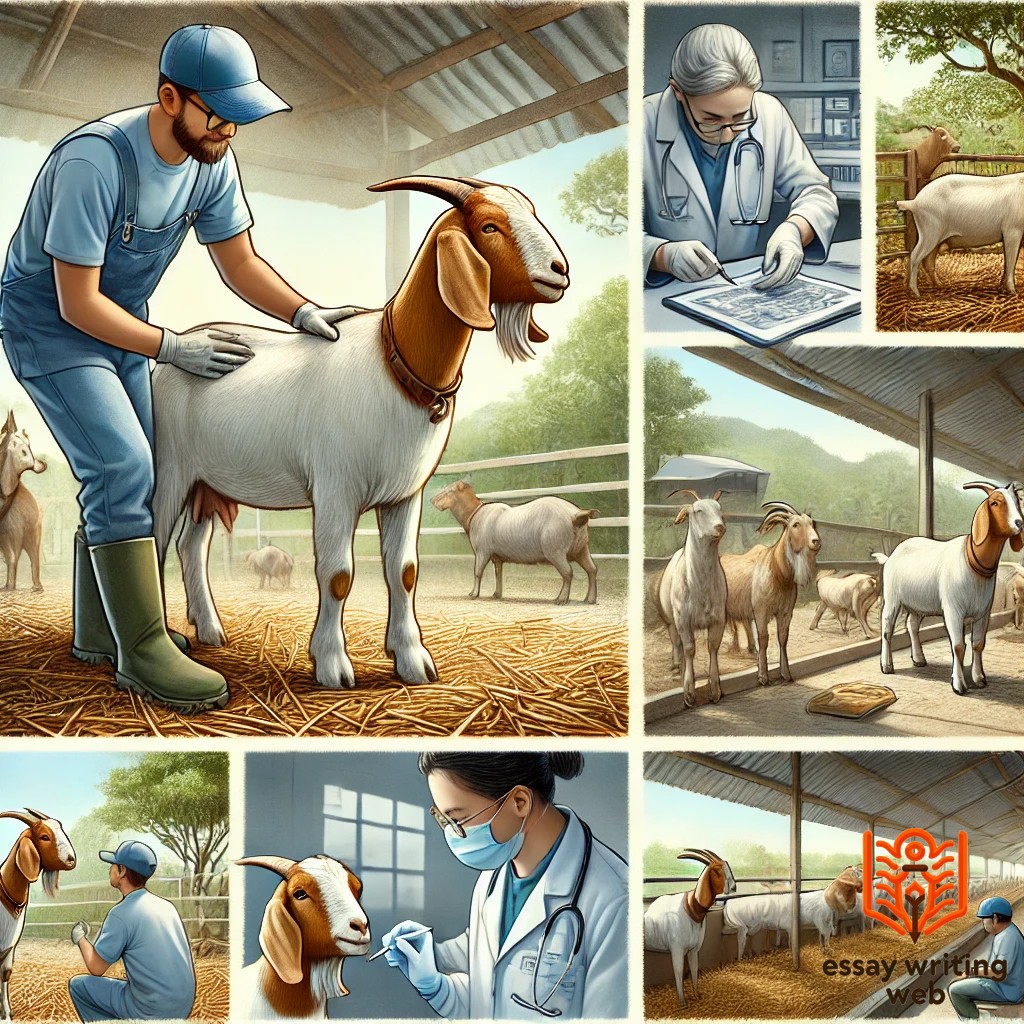
Goats are social animals and thrive when they have companionship, either with other goats or animals. Loneliness can lead to stress, negatively impacting their health.
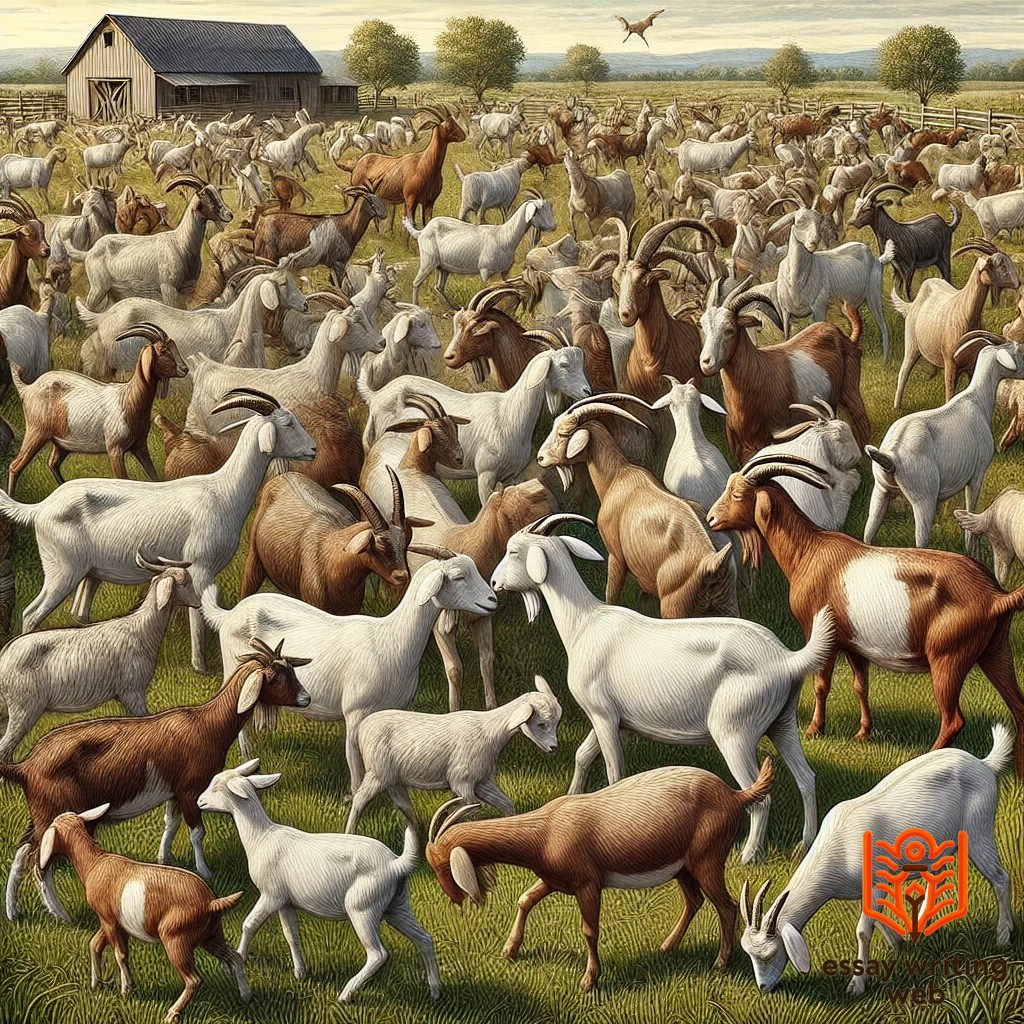
With proper care and attention, goats can lead healthy, productive lives, contributing significantly to sustainable farming systems and households worldwide.
Goats have held significant roles in various cultures and religions throughout history, symbolizing different values and serving diverse purposes. In many ancient civilizations, goats were revered for their resilience, productivity, and adaptability, which made them an essential part of agricultural life. Their role extended beyond practical uses to spiritual and symbolic meanings.
In Greek mythology, the goat is closely associated with the god Pan, who was depicted as a half-goat, half-man figure representing nature, fertility, and the wilderness. Additionally, the goat Amalthea is believed to have nursed the infant Zeus, making the animal a symbol of nurturing and protection.
In Hinduism, goats are often used in rituals and sacrifices, symbolizing purity and abundance. The animal is commonly sacrificed in festivals like Durga Puja to honor deities and seek blessings. Similarly, in Islam, goats hold a significant role during Eid al-Adha, the Festival of Sacrifice, where a goat or sheep is sacrificed in commemoration of the willingness of Prophet Ibrahim to sacrifice his son as an act of obedience to God.
In Judaism, the "scapegoat" concept originates from ancient Jewish traditions, where a goat was symbolically burdened with the sins of the people and sent into the wilderness, representing the removal of sin and purification.
Goats continue to play an important role in festivals, rituals, and cultural practices worldwide, symbolizing everything from fertility and abundance to sacrifice and cleansing. Their versatility in both practical and symbolic realms makes them an enduring figure in human culture and religion.
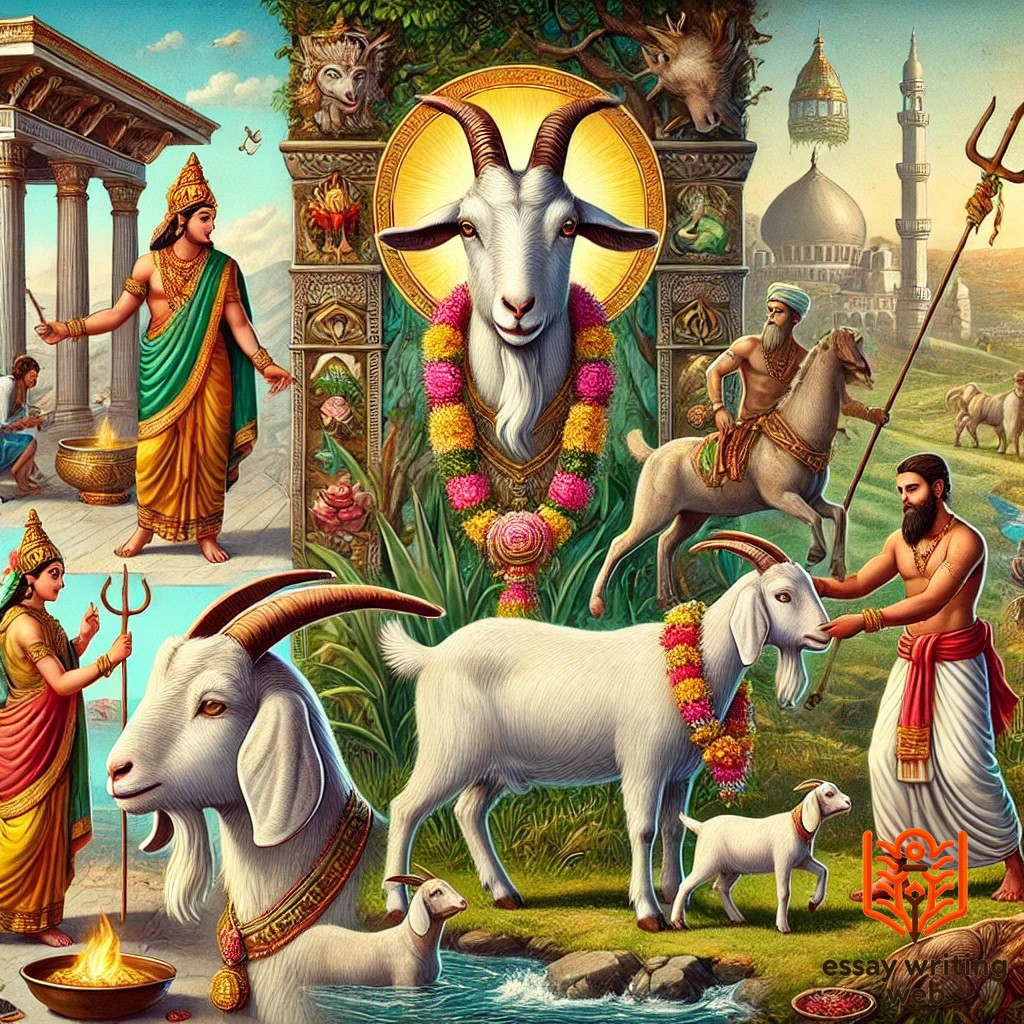
Goats have been symbolic animals in various cultures for centuries, often representing prosperity, fertility, and abundance. Their association with these concepts stems from their role as one of the earliest domesticated animals, providing essential resources like milk, meat, and fiber. This practical importance led to the goat being seen as a symbol of wealth and sustenance in many ancient societies.
In Greek mythology, goats were linked to the god Pan, a deity associated with fertility, nature, and pastoral life. The goat’s vitality and prolific reproduction made it a fitting symbol for growth and abundance. Similarly, in Norse mythology, the goat Heidrun provided an endless supply of mead from its udder, symbolizing sustenance and prosperity.
In Chinese culture, the goat is one of the animals of the zodiac and is often associated with good fortune, peace, and harmony. People born in the year of the goat are believed to be calm, gentle, and nurturing, embodying the qualities that bring prosperity to families and communities.
Goats also play a role in rituals and festivals where they are seen as offerings for blessings, reinforcing their symbolic link to abundance and fertility. Their ability to thrive in harsh environments further adds to their association with resilience, making them a powerful symbol of sustenance and prosperity throughout history.
